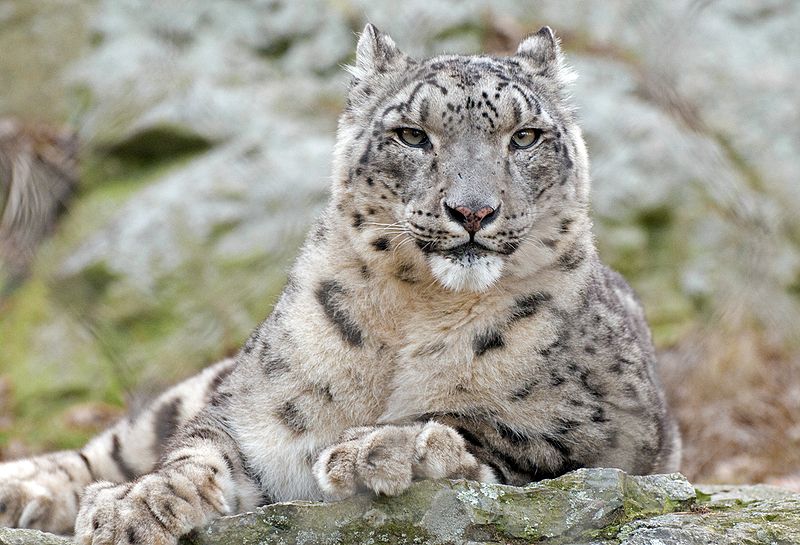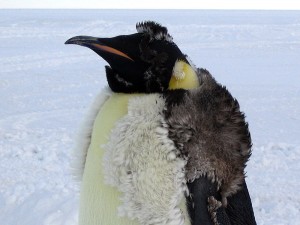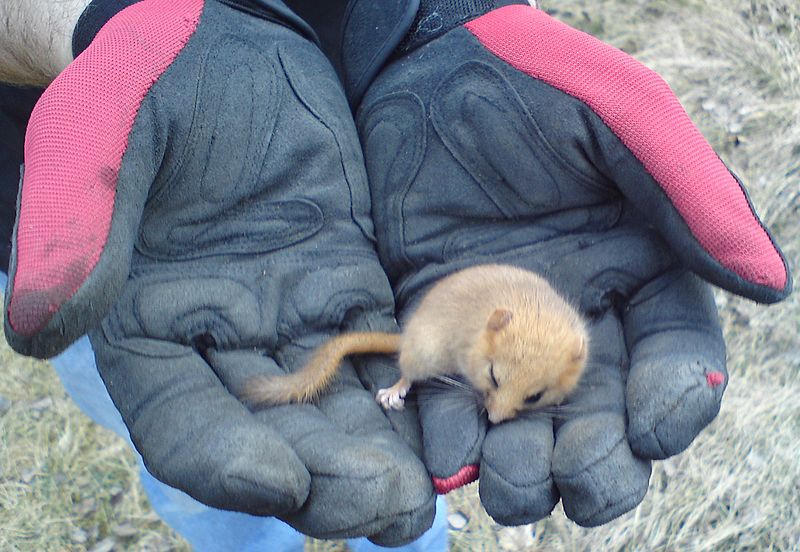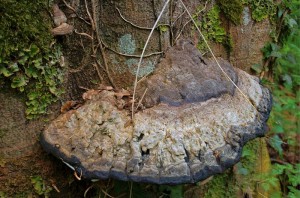Conservation: Social as well as Scientific
A study of local attitudes towards snow leopard conservation in Nepal has revealed that local people value the cat for the personal benefits they get from it, as well as its intrinsic value.
 Image: By Eric Kilby from USA (Snow Leopard Relaxed) [CC-BY-SA-2.0 (http://creativecommons.org/licenses/by-sa/2.0)], via Wikimedia Commons
Image: By Eric Kilby from USA (Snow Leopard Relaxed) [CC-BY-SA-2.0 (http://creativecommons.org/licenses/by-sa/2.0)], via Wikimedia Commons Local people in the Nepal Himalayas value snow leopards as much for the potential personal benefits they gain from the animals’ conservation as they do for the intrinsic value of this charismatic yet endangered species. A team of researchers found that local attitudes towards the snow leopard were strongly linked to views on the conservation methods used to protect them.
Snow leopards are considered a ‘vulnerable species’, with an estimated 4,000 left in the wild, and Protected Areas have been created to safeguard their habitat. However, the animals range over much larger areas, and successful co-existence with humans is key to their survival. The potential for Protected Areas to restrict, as well as benefit, local livelihoods makes it imperative to consider how snow leopard conservation measures are perceived by inhabitants and neighbours of these areas.
Jonathan Hanson, a PhD student in the Department of Geography at the University of Cambridge, who led the study, says: “The snow leopard faces many threats to its survival. For conservation measures to succeed, they have to work for local people too, so humans and snow leopards can successfully co-exist. Wildlife conservation is a social process, as well as a scientific one.”
The researchers gathered information through a questionnaire to 705 households in two Protected Areas in the Nepal Himalayas where snow leopards and humans co-exist: Sagarmatha National Park, which is dominated by Mount Everest, and the Annapurna Conservation Area.
Local people in these areas gave a wide range of reasons for their feelings towards snow leopards. Those who felt negatively were mostly worried about co-existing with this top predator, and its potential danger to their livestock. Local herders can occasionally kill snow leopards in retaliation for their livestock being preyed upon. Positive attitudes towards snow leopards were most commonly driven by cultural beliefs in the intrinsic value of the species, and by its perceived beneficial impacts, such as attracting tourists and controlling wild herbivores.
This study, published in PLOS ONE, is the largest study of local attitudes towards snow leopards, and the first to comprehensively consider attitudes towards their conservation. It revealed positive local attitudes to a range of conservation measures used to protect the snow leopards at both study sites. These measures included bans on the killing of the leopards and their prey, livestock compensation schemes, and environmental education activities.
In contrast, local people were more opposed to conservation measures they perceived would restrict their own livelihoods, such as limits on the collection of wood. The tourism industry, cited by many as a reason to support snow leopard conservation because of the revenue it brings, also puts pressure on forest wood supplies as fuel for tourist lodges.
Those who felt positively about conserving the leopards were driven by the same beliefs in the intrinsic value of the species and of the need to conserve it, but put even greater emphasis on the range of benefits they could gain from conservation measures.
Numbers of livestock owned per household, years of education, household livelihoods and age were found to be important in explaining particular attitudes.
Hanson explains: “There is often a mismatch between the meaning and significance of ‘wildness’ to local societies and to outside conservationists. This new work shows that the success of future snow leopard conservation efforts depends not only on the right scientific approach, but on the attitudes of locals to the species and to the conservation measures being put in place to protect it.”





Sorry, comments are closed on this post